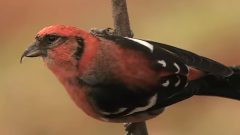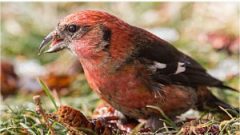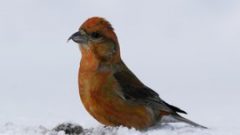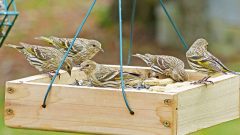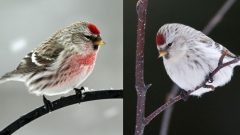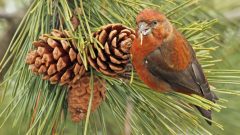White-winged Crossbill Similar Species Comparison
Main SpeciesWhite-winged Crossbill
Adult male
Medium-sized stocky finch with a crisscrossed bill. Adult males are bright red with a black tail and wings marked by 2 bold white wingbars.
© Bryan Calk / Macaulay LibraryMinnesota, January 23, 2019Female
Stocky finch with a crisscrossed bill. Females are yellowish with streaks on the back and belly. They also have 2 bold white wingbars, though one wingbar is often concealed.
© Chris Wood / Macaulay LibraryNew York, March 02, 2009Adult female and male
Uses the crisscrossed bill to separate the scales on the pine cone and extract the seeds.
© Timothy Barksdale / Macaulay LibraryIowa, January 31, 1998Immature male
Immature males are patchy red and yellow with dark wings marked by 2 bold white wingbars.
© David Turgeon / Macaulay LibraryQuebec, February 17, 2020Juvenile
Juveniles are heavily streaked above and below with 2 white wingbars.
© Ryan Schain / Macaulay LibraryMassachusetts, November 17, 2012Adult male
Wanders nomadically across the boreal forest in search of cone crops, sometimes turning up much farther south during the nonbreeding season.
© Jeffrey Moore / Macaulay LibraryOhio, January 25, 2009Habitat
Found in evergreen forests, especially those with large crops of spruce and tamarack.
© Daniel Jauvin / Macaulay LibraryQuebec, July 07, 2017Similar SpeciesRed Crossbill
Adult male
Red Crossbills generally have unmarked wings, whereas White-winged Crossbills have 2 bold white wingbars. Some Red Crossbills may have faint wingbars, but they are never as thick or bold as White-winged.
© Christoph Moning / Macaulay LibraryBayern, May 23, 2010Similar SpeciesRed Crossbill
Female
Female Red Crossbills have unmarked wings, whereas female White-winged Crossbills have 2 bold white wingbars.
© Chris Wood / Macaulay LibraryNew York, February 25, 2007Similar SpeciesPine Grosbeak
Adult male
Pine Grosbeaks are larger and have a longer tail than White-winged Crossbills. They also have a stubbier bill and thinner wingbars.
© Shawn Billerman / Macaulay LibraryWyoming, June 15, 2014Similar SpeciesPine Grosbeak
Female
Female Pine Grosbeaks have an unstreaked grayish belly, whereas the much smaller female White-winged Crossbill has a streaked yellowish belly.
© Doug Hitchcox / Macaulay LibraryMaine, February 16, 2011Compare with Similar Species
Click on an image to compare
Species in This Family
Finches, Euphonias, and Allies(Order: Passeriformes, Family: Fringillidae)
More to Read
Don't miss a thing! Join our email list
The Cornell Lab will send you updates about birds,
birding, and opportunities to help bird conservation.



















